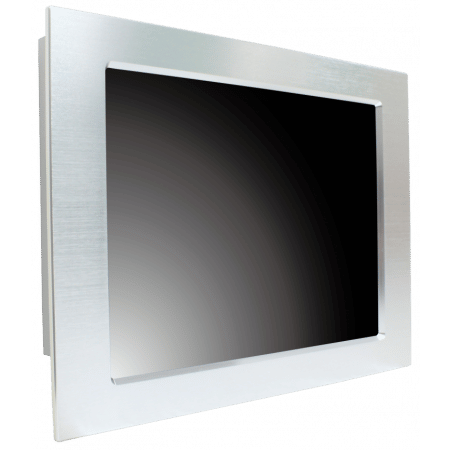
All You Need to Know About HMI
Posted on January 31, 2023
HMI or Human Machine Interface is just a fancy term for computers used to control industrial machines. Here is a rundown of everything you need to know when choosing an HMI system for your needs.
An Intro to Human Machine Interfaces (HMI)
Industrial automation has made manufacturing more streamlined, but the introduction of complex machinery into the workflow also creates its own issues. The chief problem is communication and control.
Not every factory worker will know the exact specifics of every machine being operated, nor should they need to. After all, you cannot exactly run an engineering course for every new hire just to help them interface with the machinery.
This is why having a visual interface is essential to smooth industrial operation. An HMI is basically a tablet computer that abstracts away the underlying complexity of the machinery and translates the controls into a simple GUI.
The idea is to represent everything – from the inputs to the generated data – in a visual interface that can be interacted with a touch. This makes industrial machines easier to understand and operate, even with limited training.
Roles Performed By HMI
Not all Human Machine Interfaces work the same way. Depending on the use case, the HMI system will be customized differently.
For example, the Overseer HMI is what comes to most people’s minds when they think of a Human Machine Interface. This type of computer acts as the Manufacturing Execution System (MES), providing a complete GUI application to monitor and control the entire production line.
But that’s not the only type of HMI. Pushbutton Replacer is another category of HMI that simplifies control panels into a more intuitive touchscreen interface. It is most prevalent in industrial settings, where a typical control panel can contain dozens of buttons, switches, and blinking LEDs.
And then there is the Data Handler HMI, used in scenarios where data analytics is required. Typically implemented in systems with large storage capacities, a Data Handler HMI provides a visual representation of the collected data in the form of graphs, charts, and summaries. Operators can use this information to figure out trends and monitor the production process in real-time.
Features Required in an HMI System
You cannot just plug in any embedded computer and expect it to function well as an HMI. Human Machine Interfaces have their own unique requirements, and you need a PC that can keep up with these demands.
The most common requirement is a touch screen. Earlier HMIs were standard desktop computers with normal input devices, but that proved unsuitable for industrial environments. Keyboards and mice fail too frequently in these high-dust settings, not to mention requiring more skill and time to use.
This is why most HMIs of today are Panel PCs with integrated touch displays. This protects them from dust and contamination while being intuitive to use for anyone. It is also possible to use a rugged embedded computer with a separate touch display if there is enough space for it.
Connectivity is another big need, as HMIs are supposed to communicate with a large number of devices. That means buying a system with a large number of ethernet or COM ports, and extra storage capacity if all that data has to be analyzed.
The Durability Factor
A fact that is often overlooked is that an HMI needs to be rugged. Industrial settings subject computers to high temperatures, dust, and even physical impacts, so a standard system wouldn’t do.
You need a durable system rated for impact resistance that can operate in a wide temperature range. Fanless cooling is a must, as that reduces the dust intake and greatly increases its life.
You can always go for a powerful rugged computer with a separate touch-enabled display as well. This allows you to replace the touch screen independently of the more expensive computer. Of course, many applications cannot provide that kind of space, making integrated touch Panel PCs essential.
Do You Need a Human Machine Interface?
Thanks to SCADA (Supervisory Control And Data Acquisition), managing complex industrial machinery has become easier than ever. But this advanced functionality requires a powerful computer to work, and that is where HMI comes in.
HMI systems are specialized computers that offer a visual representation of the production pipeline. This includes graphical control panels and data-driven feedback mechanisms.
The visual nature of HMIs means that touchscreens are the preferred means of input in these devices, which is why most HMIs are implemented as panel PCs. With a large number of connectivity ports and enormous data storage capacities, these rugged
computers are able to manage and monitor the most complex industrial machinery with ease.
